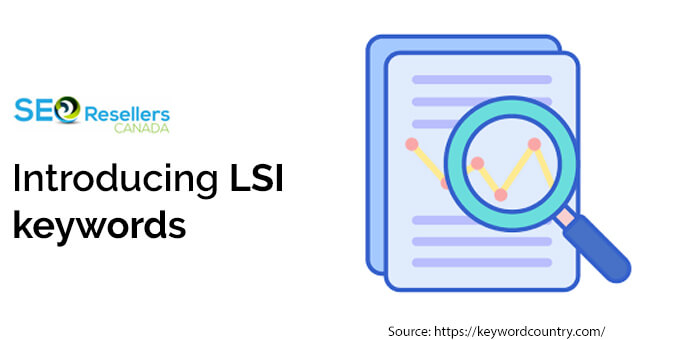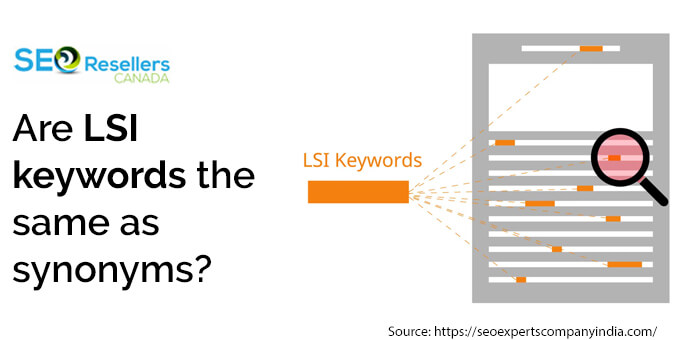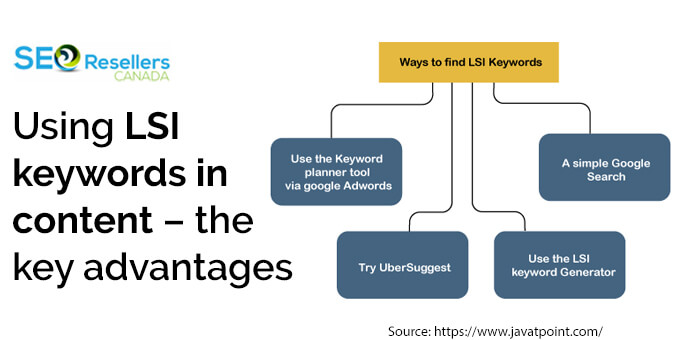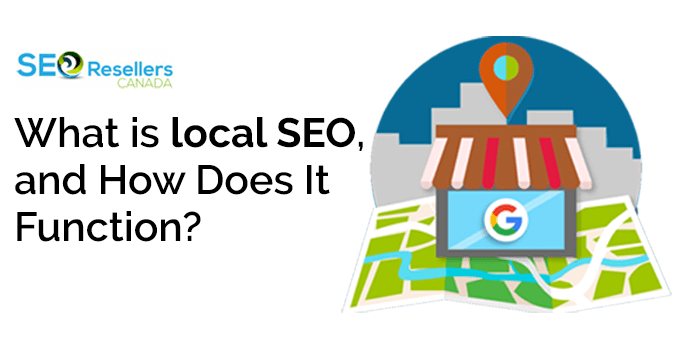In the early days of digital marketing, a single keyword was more than enough to get good rankings.
But that isn’t the case anymore, given 15% of daily Google searches are new terms that were never used before.
And this is precisely why there is a huge increase in the usage of related keywords, also known as Latent Semantic Keywords (LSI) in technical terms.
Google searchers tend to use different and unique ways to search for common concerns. By using related keywords, you can easily boost the contextuality of your content and its overall search visibility. And from Kelowna SEO perspective, using LSI keywords can have a positive impact on your overall digital marketing efforts.
So, are you ready to use LSI keywords to your benefit? Do you wish to know where to find them and use them to boost your white-label SEO tactics? Or are you wondering how to increase organic traffic using LSI keywords? Dive into this blog right away!
Let’s explore everything there is to know about this impressive component.
1- Introducing LSI keywords

LSI, or Latent Semantic Keyword, is a computer program that memorizes various synonyms based on a given context. LSI is also a technique used for identifying relationships between concepts and words of content that uses a mathematical approach.
Now coming to the actual topic of this blog – LSI keywords. These are search terms related to the main keyword you wish to target. LSI keywords assist in supporting content by adding more context to it, thereby making it easier for users and search engines to comprehend and determine what your content is about.
For instance, if your content is about cars, the LSI keywords for your content can be road, tires, automobiles, vehicle, engine, automatic transmission, and other similar words that semantically relate to cars.
2- Are LSI keywords the same as synonyms?

In some cases, LSI keywords can be synonyms. However, not all synonyms can be LSI keywords. As you can notice in the previous example, all the LSI keywords for content about cars are closely related to the main keyword, car.
In short, while using synonyms in your posts can be beneficial for on-page SEO purposes, they don’t necessarily translate into LSI keywords.
Yet another classic example would be the word “jeans.” As a synonym, you could use the term “denim,” but it isn’t necessarily an LSI keyword. Words like “faded,” “bell-bottom,” “skinny,” “torn,” “blue,” etc., could be LSI keywords for the word jeans.
An excellent way to distinguish between related keywords and synonyms is by performing a Google search. The drop-down list of suggested searches that appear as soon as you start typing something is the LSI keywords.
3- Using LSI keywords in content – the key advantages

Almost every tech-savvy individual has a unique approach to searching for something online. And this results in hundreds and thousands of unique search queries that were never used before.
To better understand every query the users type in the search box, Google made improvements to its algorithms, which assists it in better comprehending the related keyword.
Besides enhancing the contextuality of your content, LSI keywords can assist with yielding SEO benefits, too. For instance,
- Scattering LSI keywords all over your content can help search engines better comprehend your page, thereby elevating its ranking power.
- By choosing to use related keywords, you can prevent your content from being overloaded with the targeted keyword, also known as keyword stuffing.
- LSI keywords diversify the search experience for users. This, in turn, positively impacts the various factors that help with page ranking, including bounce rate, time spent on the page and more.
4- Where to find LSI keywords?

The best thing about LSI keyword research is that there are multiple ways to find them. You can use either Google or LSI keyword research tool to locate related keywords.
4.1- Use Google’s Related Searches
As a Google user, you may not go beyond the first half section of the page. But as a marketer, you should consider scrolling all the way down to find a gold mine of related keywords.
The “related searches” at the bottom of the result page provide a great list of LSI keywords that Google users may have used at some point in time. Even Google itself considers such keywords to be relevant to the search made.
This practice will help you uncover, implement and get ranked for long-tailed keywords you may have otherwise missed on the Google Ads keyword planner.
4.2- Find directly from Google search
Yet another impactful way of locating LSI keywords is through a simple Google search. You can use Google search in various ways to find the most relevant keyword to your targeted keyword.
For instance, use the Google autocomplete. Enter your target keyword or phrase in the search bar, and you should be displayed a drop-down list that provides various alternatives to what your search could be.
The alternatives listed below are considered quite similar to what you have searched for on Google.
4.3- Employ the LSI graph tool
The notion behind designing LSI Graph Tool was to generate LSI keywords in significant quantities. The best thing about this tool is that it is both easy to use and can produce a list of LSI keywords that best describes your target keyword.
When using this tool, all you need to do is enter your target keyword in the search bar of the tool and click generate. You should be able to obtain excellent amounts of keywords that semantically relates to your chosen keyword.
4.4- SEMrush
Besides using the free Google Keyword Planner, there are many other paid tools that experts utilize for advanced SEO keyword research. One of these tools is the SEMrush keyword research tool.
While you use the SEMrush tool for a variety of reasons, keyword research is one of the preferred reasons why experts employ this tool.
Here is a quick overview of how to effectively use the SEMrush keyword research tool –
- Start by typing your target keyword in the search bar of this tool and click “try it.”
- Once that is done, the tool will proceed to generate a list of related keywords for you. They proceed to select “phrase match” from the menu listed above.
- For a more exhaustive list of relevant LSI keywords, you can click on the “view full report,” button.
4.5- Utilize Google Keyword planner
Google keyword research tool is one of the classic tools that has been used by experts for a long time now. In fact, many people likely start their keyword search process with this keyword tool.
Although experts rely on keyword planners for AdWords Advertisements, it still works wonders in finding LSI keywords.
And since the tool is free and easy to access, you are most likely going to use the same keywords as your market competitors.
To use this tool for LSI keywords, you will require logging it into your AdWords account. Then proceed to click on “tools” on the main menu. You should find “keyword planner” in the drop-down list on the left-hand side of the menu.
Proceed to click on “find new keywords,” and then type the main keyword you wish to target and click “get started.”
You should be provided with a list of related keywords that you can easily use in your content.
5- Proven tips for making the most out of using LSI keywords

Now that you know how to obtain LSI keywords, it is time to understand how to boost your business on Google search using LSI keywords.
5.1- Use LSI keywords as a supplement
In the hopes to increase the website visibility on Google, marketers often overlook basic yet most important things. The same thing happens when using LSI keywords. Quite often, marketers replace target keywords with LSI keywords.
However, it is important to remember that LSI keywords are just related match to the target keywords. Hence, avoid over-focusing on them.
Ensure that you are using LSI keywords as a supplement for your targeted keywords. Remember, the notion is to boost your target keyword’s impact using LSI keywords and not the other way around.
5.2- Avoid keyword stuffing
Your LSI keywords are quite similar to your target keyword. Hence, most of the rules that apply to your target keyword apply to LSI keywords, too.
For instance, using LSI keywords in excessive amounts will do no good to your content. It will only result in keyword stuffing. In fact, overloading your content with LSI keywords could put your site at risk of attracting penalties, thereby hurting your overall ranking.
Instead, focus on placing the most relevant LSI keywords naturally across the content. Even if you use relative keywords sparingly, it doesn’t matter. As long as the keywords go with the flow and don’t feel awkward to read, you are good.
In short, use a couple of LSI keywords that add value to your content and make it easy for your readers and search engines to understand your content without overusing it.
5.3- LSI keyword best practices
When using LSI keywords, the idea should be to sprinkle them across your content. You can also place them strategically in some optimal places, thereby boosting their impact.
If you’re wondering how to boost your business in Google search by relevantly placing LSI keywords in your content, then here are some best practices –
5.3.1- Header tags
To determine the context of the content, Google pays added attention to the headings. Hence, it is crucial that you add LSI keywords in the header tags, including H1, H2, H3 and so on.
LSI keywords can come in handy in breaking down the content for the readers. Just ensure they are placed naturally.
5.3.2- Anchor text
LSI keywords can also double as anchor text so that you can link your products and services, too.
5.3.3- In the intro and conclusion
Similar to how you would add the target keyword in the introduction and conclusion of your content, consider adding an LSI keyword in them, too. This way, you can simplify the context, thereby allowing your readers to better comprehend your content.
5.3.4- Meta description
Using relevant keyword search tools, find competitors keywords that are more than just synonyms of your target keywords. This way, you could use those related keywords to produce meta descriptions that compel the readers to click on the said link. If possible, use at least one LSI keyword in the meta description.
5.3.5- URL/Title tags
It is a common practice among website owners to use target keywords in the title tags and URLs. Go a little beyond, and try adding LSI keywords in the URL and title tags, too.
If you have come across a long-tailed LSI keyword after the Google keyword search process, stick to adding the LSI keyword only in the title tags and not the URL, as that could elongate your URLs, making the link complicated.
Adding LSI in title tags can assist you in ranking for long-tailed keywords and targeted keywords.
5.3.6- Image alt tags
If you add alt tags to your images, make a few changes to them and incorporate LSI keywords in the alt tags. This could be the best way to boost SEO efforts.
5.4- Some additional tips
As mentioned earlier, LSI keywords aren’t necessarily synonyms (even though they can be). Hence, steer clear from using keywords that mean the same thing as your target keyword. Of course, using a few synonyms won’t hurt, but using semantically related keywords can help you increase the organic search.
For instance, a good list of LSI keywords can assist you in capturing the chosen topic in its entirety.
6- Bottom line
In recent years, Google has evolved into a search giant that uses AI and machine learning to deliver the most value-adding results to its users.
In fact, LSI is commonly used by Google and other search engines to locate context for any type of content. Hence, learning how to leverage these valuable keywords in your content marketing campaigns and SEO strategy is a must.
Assuming you have gone through each section of this blog, we assure you that you are now well-equipped with all the LSI knowledge required to boost your SEO and overall digital presence. All you need to do now is take action – rework existing content or create one from scratch using the tips suggested above.
If this is too much work for you, consider working with a keyword research expert to get the job done for you!













